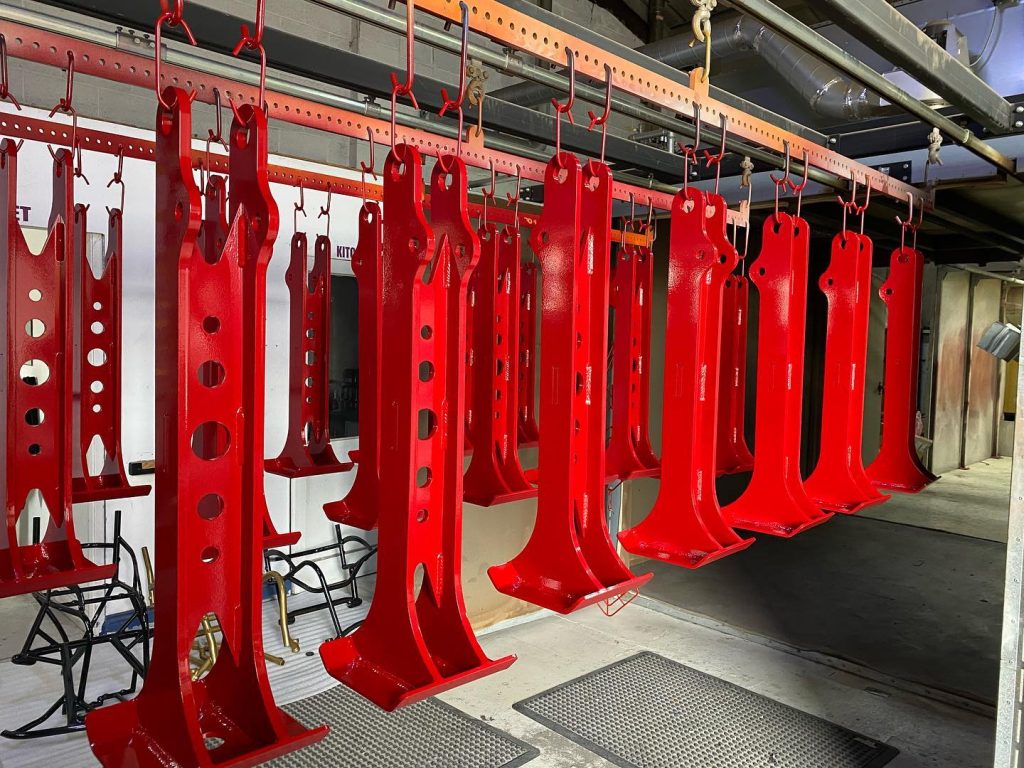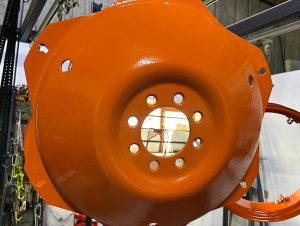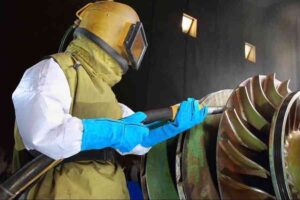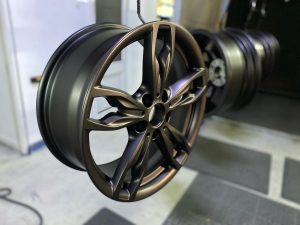Shot-blasting and sandblasting are abrasive cleaning and preparation methods that remove rust, paint, contaminants, and other imperfections from surfaces. While both techniques provide effective treatment and end results, they differ in their materials and means.
Learn the key differences between shot-blasting and sandblasting techniques. Understand their applications, benefits, and which method is best for your project.
What is shot-blasting?
Shot blasting technique is a versatile and effective abrasive surface treatment process, and removes the need for harsh chemical treatments that can be environmentally harmful.
It uses abrasive media, such as steel balls, grit, or pellets, to clean, strengthen, or polish surfaces.
It has a range of applications, like preparing surfaces for coating, painting or welding. It’s can also remove rust, paint, scale, and imperfections from metal.
The way it works is by propelling abrasive material at high velocity onto the surface, with the impact creating a uniform texture or finish.
What is sandblasting?
Sandblasting uses high-pressure air to propel fine sand or other abrasive materials, to clean, descale, degrease, or roughen surfaces. It’s a highly effective technique often used on softer materials.
It can remove old paint coatings, scale, rust, and other contaminants from metal surfaces.
It’s often used to prepare surfaces prior to painting, bonding, or coating.
Check out this article – What industries use sandblasting?
Which is better: Sandblasting or shot-blasting?
Both shot-blasting and sand blasting have a range of strengths depending on the application.
Shot-blasting is generally more suitable for industrial and heavier duty purposes.
It’s ideal for cleaning, strengthening, and preparing metal surfaces because it not only effectively removes contaminants; it can also create a highly uniform finish.
Shot-blasting can also be used to induce compressive stress, which strengthens metals, improving their resistance and durability.
Sandblasting is highly versatile and tends to be gentler than shot-blasting.
Using abrasive media such as fine sand, glass beads, or aluminum oxide, it’s usually chosen for smaller-scale or more delicate projects. It’s also often used to clean softer materials such as wood, remove paint from stone, or for etching glass.
Sand doesn’t have the intensity of shot-blasting, meaning that it’s used less frequently for industrial projects.
Shot-blasting is regarded by some as superior due to its strength, speed, and ability to prepare surfaces with a durable finish.
It’s typically the preferred method in industries such as manufacturing, automotive, and aerospace, where strong, well-prepared surfaces are critical.
For smaller-scale, more intricate, and decorative tasks, sandblasting can be an alternative.
Choosing between shot-blasting and sandblasting
When choosing between sandblasting and shot-blasting, there are a number of factors to consider with the material being treated and the scale of the project being the key determinant.
Shot-blasting, which uses tough abrasive materials, is ideal for treating harder surfaces such as steel, iron or concrete. This makes it an essential application within industrial settings.
It can be particularly effective for tasks that require intense cleaning, such as preparing metal parts for future coating.
Shot-blasting can remove thick layers or rust, and can also be used to achieve a uniform texture.
Meanwhile, sand blasting will typically use finer abrasives like sand, glass beads, or aluminum oxide, making it suitable for lighter materials, such as softer metals or wood.
It’s also more suitable for removing paint, surface etching, or finishing wood surfaces on more delicate surfaces.
Shot-blasting tends to produce a more consistent finish that enhances adhesion for further coatings, adding strength to metal surfaces and extending their lifespan.
This can make it the preferred choice for any project that requires a durable, long-lasting finish.
Sandblasting is effective at removing surface contaminants, but tends to produce a softer finish, and can offer more control over surface detail.
This makes it ideal for projects that have specific design needs, such as creating decorative patterns or for etching glass.
Professional shot-blasting from Pershore Dip Coating
At Pershore Dip Coating, we provide a professional shot-blasting service that delivers exceptional results for our clients.
We pride ourselves on the quality of our work and can offer expert advice about the shot-blasting process.
If you’re looking for shot-blasting near you, then Pershore is the obvious choice.
Contact us to find out more, or to request a free quote.




